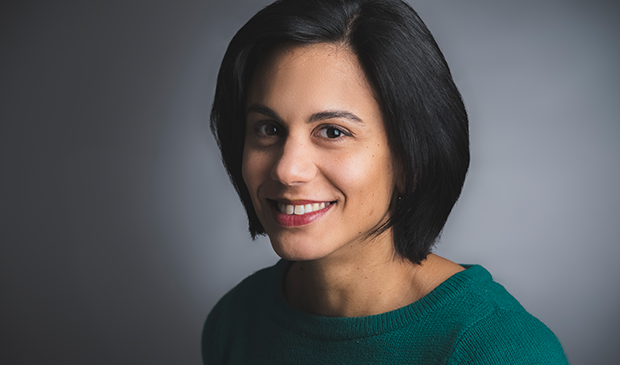Let us know what type of content you'd like to see more of. Fill out our three question survey.
GeekFest 2017: Exploring Mobile Money and Women’s Financial Inclusion with Yasmin Bin-Humam
May 10, 2017

Welcome to GeekFest 2017, a series of interviews featuring ICT4D thought leaders. Our goals for #geekfest2017 are: to highlight the people and organizations who are pushing the field in new directions, to feature their work and show how it’s different or new, and to support the overall growth of the ICT4D community.
In this installment, I’m picking the brain of my own sister, Yasmin Bin-Humam, a Financial Sector Specialist at the World Bank Consultative Group to Assist the Poor. Yasmin is establishing a community of practice focusing on solutions to improve women’s access to financial services, such as mobile and digital services.

Q: Why is the development community excited about the potential for mobile money to be a game changer in women’s financial inclusion?
Well, women need a game changer. Women earning less than $2 a day are 28 percent less likely than men to have bank accounts. This is just access to accounts—when you look at usage of accounts, dormancy rates are much higher for women than for men so, the gap is in essence even higher! This is why practitioners need to come together with a focus on the women’s market, as they are doing in our newly formed community of practice on women’s financial inclusion.
Q: In a recent blog post, you highlighted how women face social norms that restrict their financial inclusion. What is it about mobile money and digital financial services that makes people think it will be a game changer for women’s financial inclusion?
What we are hearing in our community of practice is that providers like it because of its potential for scale, due to lower costs associated with having fewer branches and agents. They also like it because of its potential for data to facilitate alternative credit scoring. This is particularly relevant to women who are often discriminated against by banking agents, and who lack collateral (particularly land) that banks require for loans.
Women like it because of the convenience. Women shoulder a disproportionate burden of household- and care-related tasks, often making them time-poor. Digital financial services allow women to conduct transactions when it is convenient to them. Women also like digital financial services because of the privacy it can afford—not just from men in their family, but even from the other women and the broader community. Digital services also facilitate transparency, as for example, enabling text message notifications in savings groups, whenever a transaction is made, thereby building trust in institutions.
Q: So tell us about this community of practice on women’s financial inclusion and how it is approaching mobile money?
Well, in November 2016, CGAP launched a community of practice to support an informed dialogue around the solutions to increasing women’s access to financial services. Currently, we have people from 80 different institutions—including development practitioners, financial service providers, donors, and researchers—in our membership base. We have three active working groups, including a group on technology and a group on data and measurement. The working groups are developing plans to draw upon the membership base to do things ranging from training series to sharing case studies and building consensus on definitions.
With regards to digital financial services, including mobile money, we know that women have lower rates of digital and financial literacy and so to bring women on board, providers have to invest more in reaching out to women. There are also strongly entrenched social norms against women’s independent use of technology, and providers still aren’t convinced of the potential for the women’s market. Finally, there’s the matter of having a digital identity, women often lack the necessary documentation such as birth certificates that allow them to access digital services. Our community of practice will be committed to helping identify and further understand all of the barriers women in particular face, and also to sharing what solutions have worked to date.
We also have members who are active in collecting data, something that is gaining momentum thanks to the data 2x Initiative. You can’t make a business case without data. Data will also help us to learn where in the process women drop out. Is it in proving their identity? In graduating to more complex products? Our community of practice will identify the gaps in data and women’s access to digital financial services, and hopefully we can persuade institutions to collect and share more of their data in this area.
Many initiatives will be featured in the upcoming Women’s Economic Empowerment forum hosted by the SEEP Network. On the third day of this event we will feature the community of practice.
Q. So how can people get involved in the community of practice?
People are welcome to sign up for our mailing list, or to join us on LinkedIn! They can also check out the Community of Practice’s website to stay up to date with its work.